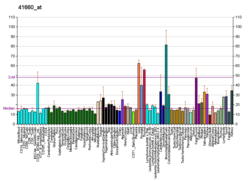CELSR1 (original) (raw)
From Wikipedia, the free encyclopedia
Protein-coding gene in humans
Cadherin EGF LAG seven-pass G-type receptor 1 also known as flamingo homolog 2 or cadherin family member 9 is a protein that in humans is encoded by the CELSR1 gene.[5][6]
The protein encoded by this gene is a member of the flamingo subfamily, part of the cadherin superfamily. The flamingo subfamily consists of nonclassic-type cadherins; a subpopulation that does not interact with catenins. The flamingo cadherins are located at the plasma membrane and have nine cadherin domains, seven epidermal growth factor-like repeats and two laminin G-like domains in their ectodomain. They also have seven transmembrane domains, a characteristic unique to this subfamily. It is postulated that these proteins are receptors involved in contact-mediated communication, with cadherin domains acting as homophilic binding regions and the EGF-like domains involved in cell adhesion and receptor-ligand interactions. This particular member is a developmentally regulated, neural-specific gene which plays an unspecified role in early embryogenesis.[6]
- ^ a b c GRCh38: Ensembl release 89: ENSG00000075275 – Ensembl, May 2017
- ^ a b c GRCm38: Ensembl release 89: ENSMUSG00000016028 – Ensembl, May 2017
- ^ "Human PubMed Reference:". National Center for Biotechnology Information, U.S. National Library of Medicine.
- ^ "Mouse PubMed Reference:". National Center for Biotechnology Information, U.S. National Library of Medicine.
- ^ Hadjantonakis AK, Sheward WJ, Harmar AJ, de Galan L, Hoovers JM, Little PF (Nov 1997). "Celsr1, a neural-specific gene encoding an unusual seven-pass transmembrane receptor, maps to mouse chromosome 15 and human chromosome 22qter" (PDF). Genomics. 45 (1): 97–104. doi:10.1006/geno.1997.4892. PMID 9339365. Archived (PDF) from the original on 2019-02-18. Retrieved 2019-09-17.
- ^ a b "Entrez Gene: CELSR1 cadherin, EGF LAG seven-pass G-type receptor 1 (flamingo homolog, Drosophila)". Archived from the original on 2024-05-02. Retrieved 2017-08-30.
Human CELSR1 genome location and CELSR1 gene details page in the UCSC Genome Browser.
Human ME2 genome location and ME2 gene details page in the UCSC Genome Browser.
Nollet F, Kools P, van Roy F (2000). "Phylogenetic analysis of the cadherin superfamily allows identification of six major subfamilies besides several solitary members". J. Mol. Biol. 299 (3): 551–72. doi:10.1006/jmbi.2000.3777. PMID 10835267.
Wu Q, Maniatis T (1999). "A striking organization of a large family of human neural cadherin-like cell adhesion genes". Cell. 97 (6): 779–90. doi:10.1016/S0092-8674(00)80789-8. PMID 10380929. S2CID 6014717.
Dunham I, Shimizu N, Roe BA, et al. (1999). "The DNA sequence of human chromosome 22". Nature. 402 (6761): 489–95. Bibcode:1999Natur.402..489D. doi:10.1038/990031. PMID 10591208.
Wu Q, Maniatis T (2000). "Large exons encoding multiple ectodomains are a characteristic feature of protocadherin genes". Proc. Natl. Acad. Sci. U.S.A. 97 (7): 3124–9. doi:10.1073/pnas.060027397. PMC 16203. PMID 10716726.
Ghosh A (2000). "Dentritic [sic] growth: don't go says flamingo". Neuron. 28 (1): 3–4. doi:10.1016/S0896-6273(00)00076-3. PMID 11086974. S2CID 12982330.
Gross J, Grimm O, Ortega G, et al. (2002). "Mutational analysis of the neuronal cadherin gene CELSR1 and exclusion as a candidate for catatonic schizophrenia in a large family". Psychiatr. Genet. 11 (4): 197–200. doi:10.1097/00041444-200112000-00003. PMID 11807409. S2CID 32757646.
Strausberg RL, Feingold EA, Grouse LH, et al. (2003). "Generation and initial analysis of more than 15,000 full-length human and mouse cDNA sequences". Proc. Natl. Acad. Sci. U.S.A. 99 (26): 16899–903. Bibcode:2002PNAS...9916899M. doi:10.1073/pnas.242603899. PMC 139241. PMID 12477932.
Georgieva L, Nikolov I, Poriazova N, et al. (2004). "Genetic variation in the seven-pass transmembrane cadherin CELSR1: lack of association with schizophrenia". Psychiatr. Genet. 13 (2): 103–6. doi:10.1097/01.ypg.0000057486.14812.03. PMID 12782967. S2CID 28084057.
Gerhard DS, Wagner L, Feingold EA, et al. (2004). "The status, quality, and expansion of the NIH full-length cDNA project: the Mammalian Gene Collection (MGC)". Genome Res. 14 (10B): 2121–7. doi:10.1101/gr.2596504. PMC 528928. PMID 15489334.
Carroll JS, Liu XS, Brodsky AS, et al. (2005). "Chromosome-wide mapping of estrogen receptor binding reveals long-range regulation requiring the forkhead protein FoxA1". Cell. 122 (1): 33–43. doi:10.1016/j.cell.2005.05.008. PMID 16009131. S2CID 16841542.
This article incorporates text from the United States National Library of Medicine, which is in the public domain.








